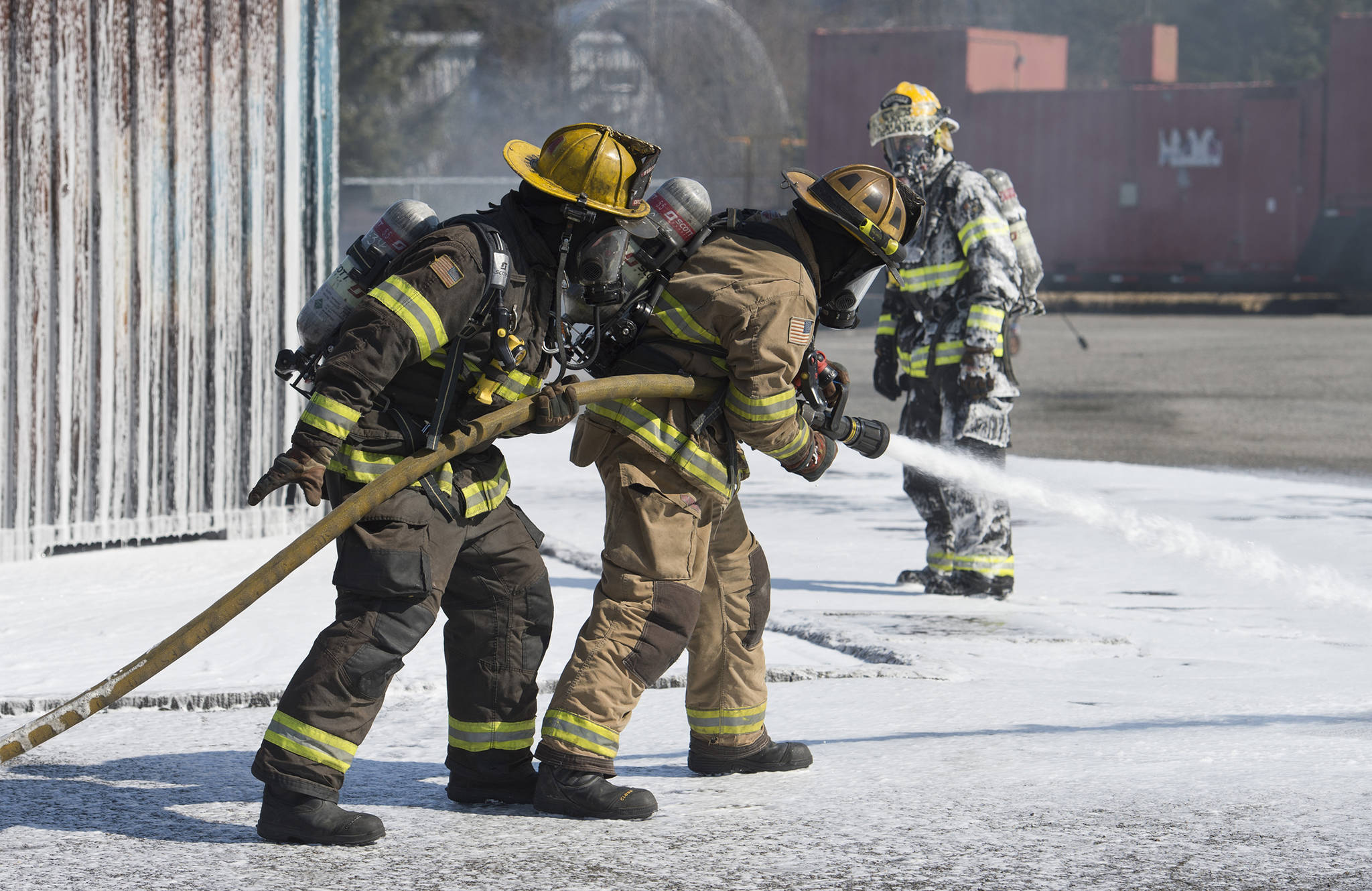A chemical with known health risks if ingested was detected at Hagevig Fire Training Center after soil and groundwater testing, but the contaminant is not near a known source of drinking water.
The City and Borough of Juneau completed an initial round of soil and groundwater testing for per- and polyfluoroalkyl substances (PFAS), and perfluorooctane sulfonate (PFOS), was detected on the property.
Drinking water in this area and throughout most of the CBJ is supplied by the CBJ municipal water system — not from individual wells, which could be contaminated. The source of CBJ’s municipal water is from Last Chance Basin and the Salmon Creek Reservoir, both of which are far removed from sources of PFOS/PFOA.
[Chemical contamination will cost the state millions]
Alaska Department of Environmental Conservation requested the soil and groundwater testing because of the historic use of Aqueous Film Forming Foams (AFFFs) at the site during fire training activities. Some types of AFFFs contain PFAS. PFOS/PFOA testing is ongoing in many communities in Alaska and around the U.S.
CBJ hired Cox Environmental to perform the testing and analysis work. Cox Environmental will perform a second round of PFOS/PFOA sampling to define the extent of the groundwater impacts.
An initial review of water utility data indicates that all properties with dwelling areas within a half mile of the training center are connected to the municipal water system.
[Juneau tests groundwater, soil for chemicals]
CBJ is also working with Cox Environmental to perform a well search in the vicinity of the Hagevig Fire Training Center to confirm there are no drinking water wells being used in this area. Cox Environmental will reach out to property owners on Sherwood Lane, Engineer’s Cutoff, Peterson Street and Crazy Horse Drive to determine if there are any wells on properties.
Nearby residents can also reach out to the CBJ Engineering Department at 586-0800 if they have information about private wells.

